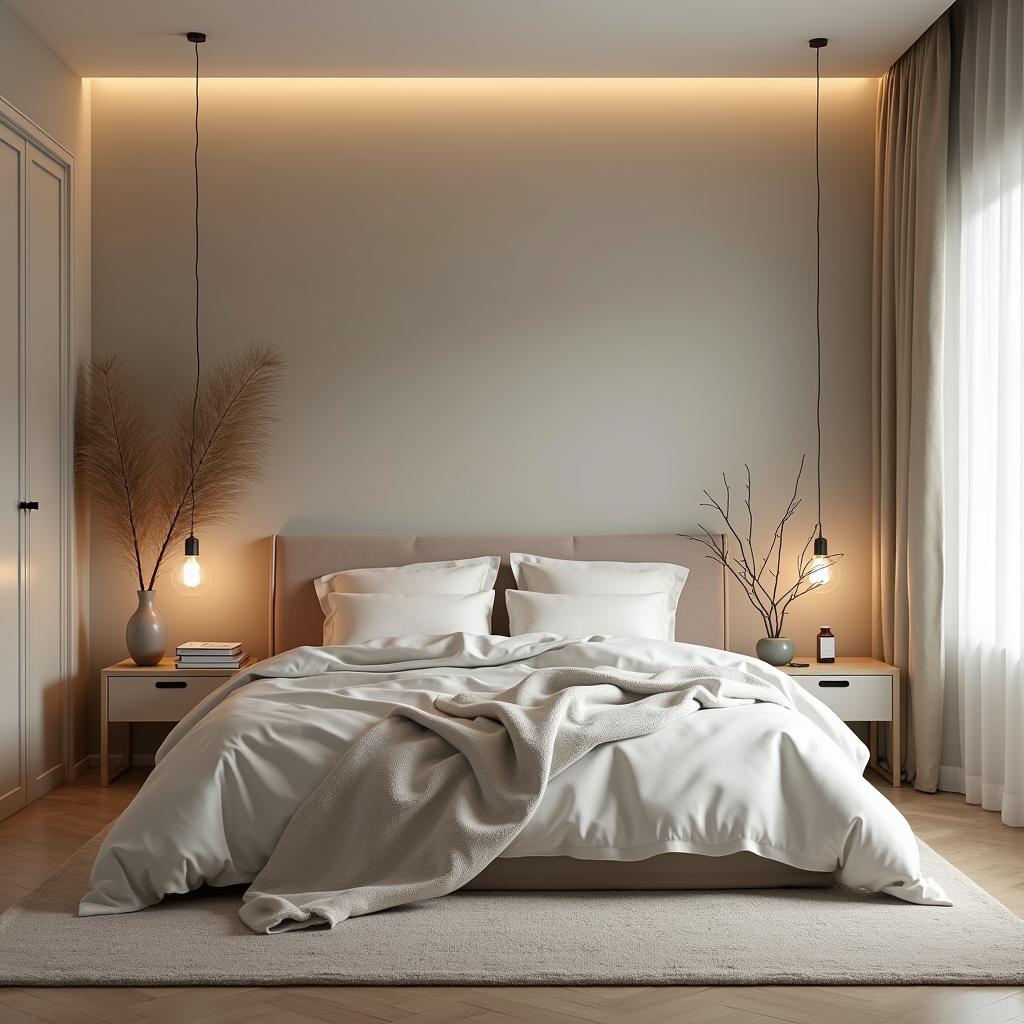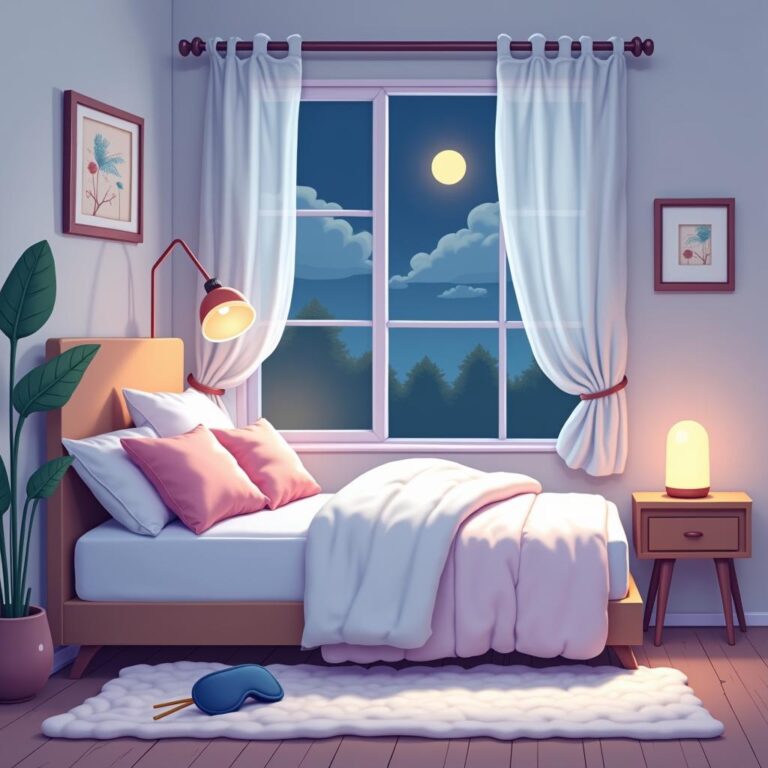How to Optimize Your Bedroom for Better Sleep: Design Hacks
In today’s fast-paced world, achieving a restful night’s sleep can feel like an elusive dream. Your bedroom, the sanctuary for relaxation, plays a crucial role in promoting better sleep quality. Here, we will explore effective design hacks on how to optimize your bedroom for better sleep. From the choice of colors to the arrangement of furniture, these tips can transform your sleeping environment.
1. Choose the Right Color Palette
Colors have a profound impact on our emotions and can significantly affect our sleep. Consider painting your bedroom walls with calming shades like soft blues, greens, or neutrals. These colors promote relaxation and tranquility, making it easier to wind down after a long day.
On the other hand, avoid bright colors like red or yellow, which can be stimulating and may disrupt your ability to relax. A harmonious color palette sets the mood for restful sleep and creates a peaceful environment.
2. Invest in Quality Bedding
Your bed is the centerpiece of your bedroom, and investing in quality bedding can make a significant difference in your sleep quality. Look for high-thread-count sheets and comfortable pillows that suit your sleeping style. If you’re a side sleeper, for instance, a firmer pillow that supports your neck may be necessary.
Additionally, consider your mattress type. Memory foam mattresses often provide excellent support and comfort, conforming to your body’s shape. Regularly inspect and replace old mattresses or sagging beds to ensure you’re sleeping on a supportive surface.
3. Minimize Noise Distractions
Noise can be a major disruptor of sleep. If you live in a bustling area, consider using soundproof curtains, which can help block outside noise while also enhancing your room’s aesthetic. You can also incorporate white noise machines or **fans** to create a consistent background sound that drowns out distractions.
Lastly, be mindful of your bedroom’s electronics. Devices that produce beeping or buzzing sounds can interrupt your sleep cycle. Keep these devices away from your bedside to maintain a serene environment.
4. Control the Lighting
Lighting plays a pivotal role in regulating your circadian rhythm, the body’s natural sleep-wake cycle. Consider using blackout curtains to block out any external light, ensuring a dark environment that promotes deep sleep.
5. Declutter Your Space
A cluttered bedroom can lead to a cluttered mind, making it difficult to relax. Take the time to declutter and organize your room. Remove items that don’t belong, and consider investing in storage solutions such as baskets or decorative boxes to keep belongings neat and orderly.
Additionally, maintain your bedside table as a sleep-friendly space. Limit it to essential items like a clock, a lamp, and perhaps a book, removing any other distractions that could deter you from a peaceful sleep environment.
6. Incorporate Plants
Bringing nature indoors can enhance your sleeping space significantly. Certain plants purify the air and promote a calming environment, helping you to relax before bed. Consider incorporating low-maintenance plants like:
- Lavender: Known for its soothing scent, lavender can help reduce anxiety and improve sleep quality.
- Snake Plant: This hardy plant releases oxygen at night, making it perfect for bedrooms.
- Pothos: Easy to care for and great for improving indoor air quality.
Adding plants not only improves aesthetics but also promotes better air quality, contributing to a more restful sleep experience.
7. Create a Tech-Free Zone
Electronics emit blue light, which can disturb your body’s natural sleep cycle. To optimize your bedroom for better sleep, establish a tech-free zone. Keep devices like smartphones, tablets, and televisions out of the bedroom, or at least away from your bedside.
Create a dedicated space for these devices outside of your sleeping area. Instead, focus on activities that promote relaxation during bedtime, like reading a book or practicing mindfulness.
8. Consider Aromatherapy
Aromatherapy has been shown to improve sleep quality. Essential oils like eucalyptus, chamomile, and bergamot can enhance relaxation. Use an essential oil diffuser in your bedroom or try pillow sprays infused with calming scents to create a soothing atmosphere.
Experiment with different aromas to find what works best for you; a pleasant scent can make your spacious bedroom feel much more welcoming and calming.
9. Keep the Temperature Cool
Your bedroom temperature can significantly impact your comfort level and sleep quality. Aim to keep the room cool, around 60 to 67 degrees Fahrenheit (15 to 20 degrees Celsius), as this temperature range is generally ideal for optimal sleep.
Using breathable materials in your bedding, such as cotton or linen, can help regulate your body temperature throughout the night. You may also consider investing in a fan or an air-conditioning unit to keep the temperature consistent.
10. Establish a Sleep Routine
Lastly, one of the most effective ways to optimize your bedroom for better sleep is to establish a consistent sleep routine. Going to bed and waking up at the same time each day helps regulate your body’s internal clock and improves the quality of your sleep.
Incorporate relaxing activities into your nighttime routine, such as reading, meditation, or gentle stretching. Over time, your body will begin to associate these activities with sleep, making it easier to fall asleep when your head hits the pillow.
Conclusion
By implementing these design hacks on how to optimize your bedroom for better sleep, you can create a peaceful environment that supports quality rest. From selecting soothing colors to controlling lighting and incorporating plants, these changes contribute to a sanctuary that promotes restful sleep. When you prioritize your sleeping space, you pave the way for better sleep hygiene and improved overall well-being.







